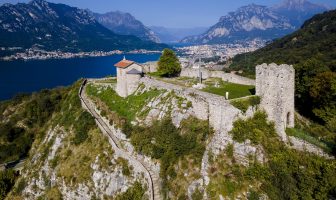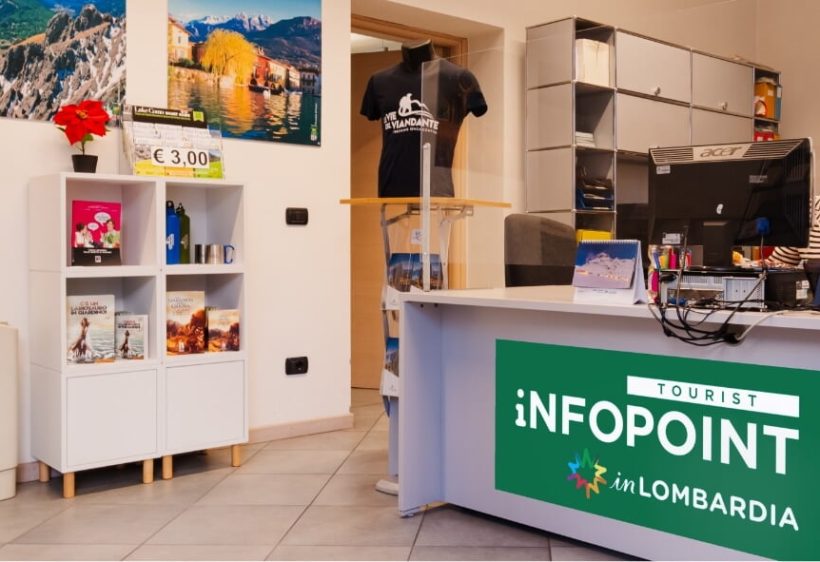
The castle of the Unnamed
A place steeped in history that dominates the surrounding landscape
The city’s most southerly district, lying at the border with the residential centre of Vercurago, overlooks Garlate lake. It is crossed by the waters of the Cuglio, a little stream from Monte Magnodeno, which rises up behind the district.
The district is bordered for its entire length by the mountain that towers above it – almost merging with the lower slopes – and lies near the place where once the “chiusa” stood, that is, the frontier between the Duchy of Milan, of which Chiuso was part, and the Republic of Venice.
On the summit of the nearby Somasca hill are the remains of the Rocchetta, an ancient fortress that was the last bastion of the Duchy of Milan against the Republic of Venice: the border between the two states was located here. This frontier was one of the few that can be crossed on foot and so was particularly susceptible, as well as strategic. This particular condition and location caused the inhabitants of Chiuso – most of whom worked in agriculture – to undergo situations of calamity and reprisals for centuries, wrapping the municipality in a blanket of wretchedness that was difficult to shake off.
It was the generosity of Alessandro Manzoni that bestowed light and glory on this place: stories are told in The Betrothed that offer glimpses of the life lived in this little village and it was here that the affair of Lucia’s kidnapping was resolved. The Unnamed – a figure who represents the local squires who tyrannised the surrounding villages – descends from his castle, located by Manzoni in the place where the Rocchetta stood, and reaches Chiuso where, due to the intercession of Cardinal Federigo Borromeo, his conversion takes place.
Another place steeped in Manzonian references stands in Chiuso, that is, the Tailor’s House, on the district’s main street, Via del Sarto to be precise. The great attention given by Alessandro Manzoni to Chiuso is owed to an autobiographical episode involving the author: The blessed Serafino Morazzone, the curate of the little village who lived between the eighteenth and nineteenth centuries and died with an aura of sanctity, was Manzoni’s beloved confessor. A small museum that collects memorabilia of the blessed Serafino and evidence of the genial relations between him and Manzoni is located near the parish church of Santa Maria Assunta.
The origin of the name: the municipality was given its name due to its position, not far from the border between the Duchy of Milan and the Republic of Venice: the so-called “Visconti Chiusa”, that is, the frontier between the two States.
Inhabitants’ nickname: due to the unfortunate position of the district, the inhabitants were traditionally nicknamed “Büs”, that is, “hole”.
Not to be missed: the Rock of the Unnamed on Somasca hill, the Tailor’s House in the heart of the district and, near the end of the residential area, the little church of San Giovanni Battista: the latter, of Romanesque origin, in addition to preserving Manzonian literary references, is a trove of precious artist treasures, such as the fifteenth-century frescos attributed to Pietro da Cemmo or the Baschenis brothers.


Ask us, we will give you suggestions and directions to enjoy the city and the surrounding area to the fullest.
Contact us